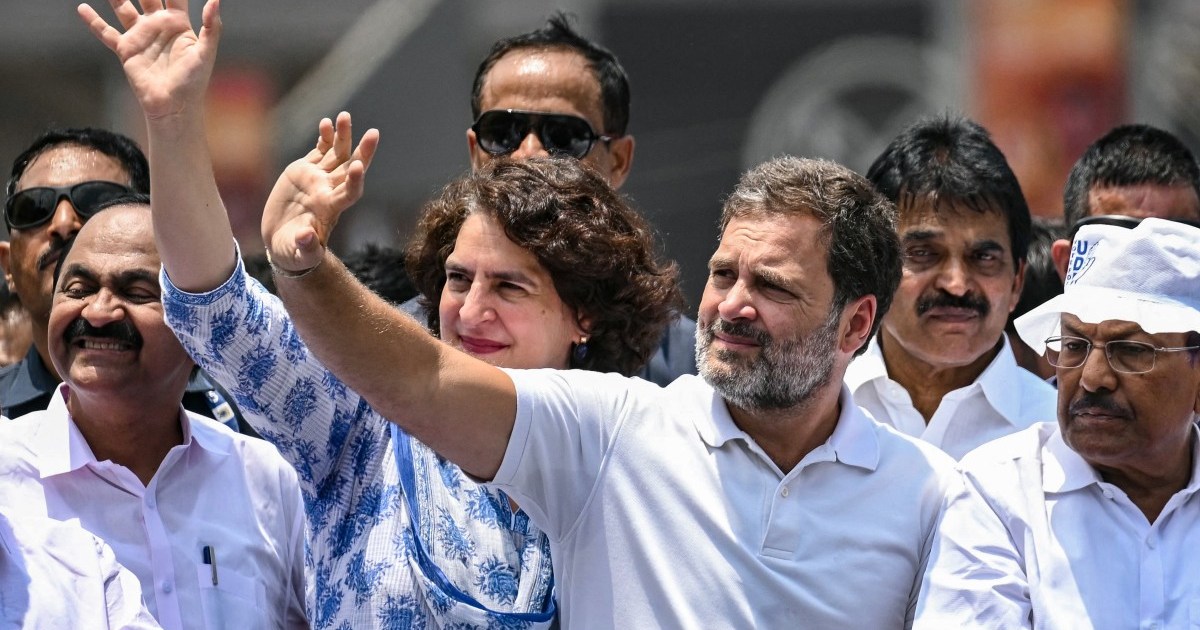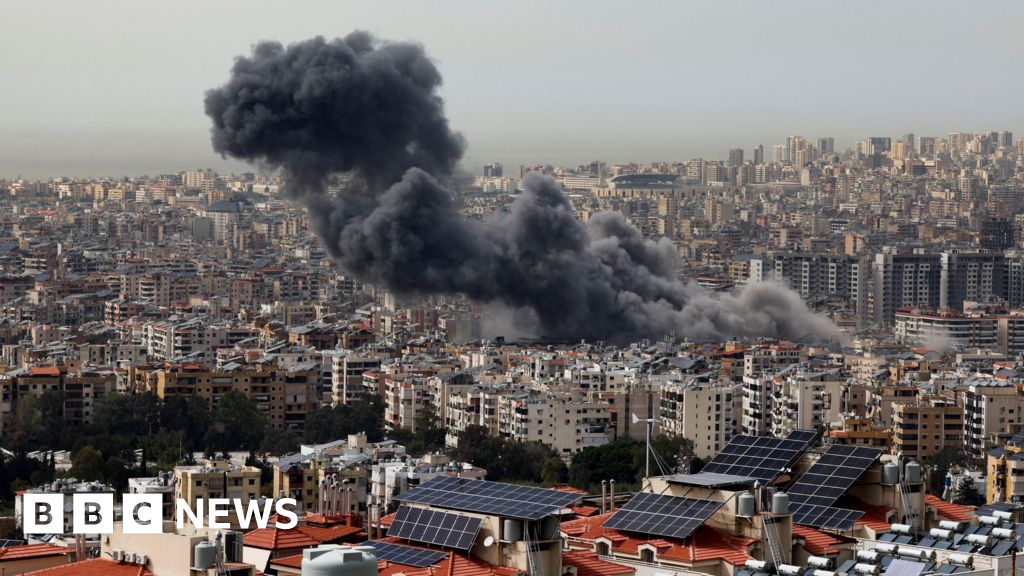India Lok Sabha election 2024 Phase 5: Who votes and what’s at stake? | India Election 2024 News
Indians will cast their ballots on May 20 for the fifth phase of the world’s largest electoral exercise as the country’s national election enters its final stages after weeks of heated campaign barbs and seemingly lower-than-expected voter enthusiasm.
Forty-nine constituencies will be up for grabs across six states and two federally administered territories (union territories). The main opposition Congress party’s leader Rahul Gandhi is on the ballot in the family bastion of Rae Bareli in the northern Uttar Pradesh (UP) state while Minister of Defence Rajnath Singh will be seeking a third term in Lucknow, the capital of UP.
Voting in the seven-phase elections kicked off on April 19 and the last phase will be held on June 1, concluding a mammoth exercise in which at least 969 million people are registered to vote. People from across 36 states and union territories are expected to elect 543 representatives to the Lok Sabha – the parliament’s lower house. Votes will be counted on June 4.
The first four phases – April 19, April 26, May 7 and May 13 – saw a voter turnout of 66.1, 66.7, and 61 percent and 67.3 percent respectively.
Most political parties are aligned with two major coalitions: The National Democratic Alliance (NDA), led by Prime Minister Narendra Modi’s governing Bharatiya Janata Party (BJP), and the Indian National Developmental Inclusive Alliance (INDIA), a coalition of 26 parties led by the main opposition party, the Congress.
Who is voting in the fifth phase?
Registered voters in the following states and union territories will cast their ballots on May 20:
- Jharkhand: Three of the eastern state’s 14 constituencies
- Odisha: Five of the eastern state’s 21 constituencies
- Uttar Pradesh: 14 of the northern state’s 80 constituencies
- Bihar: Five of the eastern state’s 40 constituencies
- Maharashtra: 13 of the western state’s 48 constituencies
- West Bengal: Seven of the eastern state’s 42 constituencies
- Ladakh: The union territory’s sole constituency
- Jammu and Kashmir: One of the union territory’s five constituencies
What are some of the key constituencies?
Amethi, Rae Bareli, Kaiserganj, Faizabad (Uttar Pradesh): All eyes would be on Amethi and Rae Bareli – the Nehru-Gandhi family fiefdoms. Rahul Gandhi is contesting Rae Bareli in place of his mother and former Congress chief Sonia Gandhi, who represented the seat four times. The Gandhi scion is also seeking re-election to southern Kerala state’s Wayanad for which polling has already taken place.
Battle lines are sharply drawn in the neighbouring Amethi constituency, which the Congress party wants to wrest from federal Minister for Women and Child Development Smriti Irani. The party has dominated the two constituencies for decades, which have the distinction of sending two prime ministers – Indira Gandhi and Rajiv Gandhi, Rahul’s grandmother and father respectively — to parliament. Rahul Gandhi won Amethi in 2004, 2009 and 2014, before Irani defeated him in 2019. Congress loyalist KL Sharma is challenging Irani this time.
Also in Uttar Pradesh is Kaiserganj, where BJP MP Brij Bhushan Sharan Singh has been denied a ticket over charges of sexual harassment. The former Wrestling Federation of India (WFI) president denies the charges. But his son Karan Bhushan is the party candidate.
Some 100km (60 miles) away, is Faizabad, which is home to the controversial Ayodhya Ram temple. Lallu Singh is seeking re-election on a BJP ticket against his main rival Awadhesh Prasad of the Samajwadi Party, which is part of the INDIA alliance. The BJP, which won 62 of the state’s 80 seats in 2019, hopes to repeat its performance here – or even improve its numbers.
Saran, Hajipur (Bihar): Former Chief Minister Lalu Prasad Yadav’s daughter Rohini Acharya is challenging the BJP’s Rajiv Pratap Ruddy in Saran. Her father also represented this seat in the past. Yadav’s Rashtriya Janata Dal party is a part of the INDIA alliance.
Meanwhile, Yadav’s trusted aide Shiv Chandra Ram is looking for an upset in Hajipur, a constituency that was thrust into the media limelight in 1977, when Ram Vilas Paswan won with a record mandate. Paswan went on to represent the constituency eight times. His son Chirag is contesting in his late father’s bastion. Paswan belongs to the BJP-led NDA.
Ladakh (Ladakh): This lone constituency in the union territory of Ladakh, which was carved out of Indian-administered Kashmir in 2019, has witnessed protests against the BJP, which has denied a ticket to its sitting MP Jamyang Tsering Namgyal. The Congress party hopes to capitalise on the local grievances, the main being the demand to bring the region under the Sixth Schedule to India’s Constitution. Congress has promised to include Ladakh in the schedule, which will mean protection for the tribal status of the region. Many locals fear that without that provision, their land, jobs and education benefits could be overrun by people from other parts of the country.
The region is ecologically sensitive and protesters have warned about the risks of over-tourism. Ladakh is also on the front lines of a tense India-China border standoff, since a deadly clash in May 2020 in which at least 20 Indian soldiers and four Chinese soldiers were killed.
Many analysts say evidence suggests that China has since nibbled away at previously Indian-held territory in Ladakh, a claim New Delhi denies.
When does the voting start and end?
Voting will begin at 7am local time (01:30 GMT) and end at 6pm (12:30 GMT). Voters already in the queue by the time polls close will get to vote even if that means keeping polling stations open longer.
Complete election results for all phases are to be released on June 4.
Which parties rule the states being polled in the fifth phase?
- The BJP governs Madhya Pradesh and Uttar Pradesh outright.
- Maharashtra and Bihar are governed by the BJP and its coalition partners.
- Odisha is governed by the NDA-aligned Biju Janata Dal (BJD).
- Jharkhand is governed by the INDIA alliance led by Jharkhand Mukti Morcha.
- The All India Trinamool Congress party, a member of the INDIA alliance, has been governing West Bengal since 2011.
- Jammu and Kashmir, and Ladakh, are governed directly from New Delhi.
Who won these Lok Sabha seats in 2019?
In the last Lok Sabha elections, Congress, along with parties now affiliated with the INDIA alliance and those affiliated then with the Congress-led United Progressive Alliance, won eight of the 49 seats to be decided on May 20.
The BJP and parties affiliated with the NDA won 39 of the seats in 2019.
How much of India has voted so far?
The first four phases of the Lok Sabha elections have already decided the fate of 380 MPs.
So far, voting has concluded for all seats in the states of Tamil Nadu, Kerala, Meghalaya, Andhra Pradesh, Assam, Manipur, Karnataka, Mizoram, Arunachal Pradesh, Telangana, Nagaland, Uttarakhand, Chhattisgarh, Goa, Gujarat, Rajasthan, Sikkim, Tripura; the Andaman and Nicobar islands; and the Dadra and Nagar Haveli, Daman, Diu, Lakshadweep and Puducherry union territories.
The sixth phase will kick off on May 25, and the seventh and final phase will begin on June 1.
Check out our Latest News and Follow us at Facebook
Original Source







